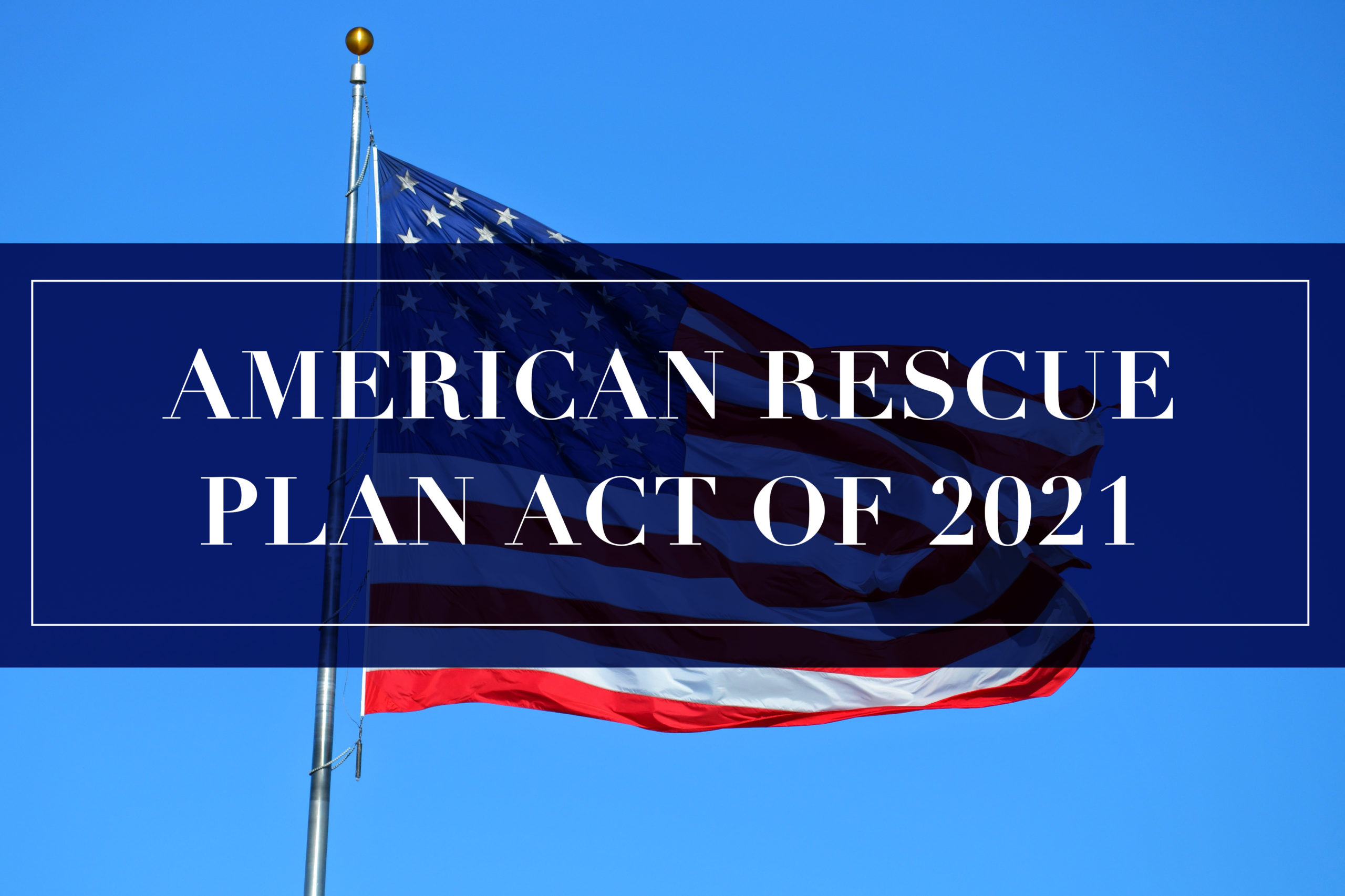President Biden signed the American Rescue Plan Act (ARPA) into law last week, and our phones have not stopped ringing! Below are responses to our clients’ most frequently asked questions about the new law.
Q: What are the ARPA’s workplace-related provisions?
A: The ARPA includes two main provisions for employers to consider: (1) an extension of the emergency paid sick leave (EPSL) and extended FMLA (EFMLA) leave originally available under the Families First Coronavirus Response Act (FFCRA) for employers with no more than 500 employees that choose to extend those benefits; and (2) government subsidies for COBRA continuation premiums.
Q: Which employers are covered by the ARPA?
A: It depends on the provision. The FFCRA-like tax credits are available to employers of 500 or fewer employees. The COBRA subsidy program applies to most group health plans that are subject to the Employee Retirement Income Security ACT (ERISA), the Public Health Service Act (PHSA), or the Internal Revenue Code, or that otherwise are subject to state law that provides comparable continuation coverage (e.g., Cal-COBRA). The COBRA subsidy program does not apply to group coverage under a health flexible spending account with a cafeteria plan. (Please call benefits counsel with questions about this provision. Benefits issues are way above our pay grade. Seriously.)
Q: Do the EPSL and EFMLA tax credits only apply to employers with 500 or fewer employees?
A: Yes.
Q: Is the ARPA effective immediately?
The ARPA’s provisions regarding EPSL and EFMLA are effective on April 1, and expire on September 30, 2021, unless Congress takes further action.
Q: Does the ARPA simply extend the FFCRA?
A: No. The ARPA is a new law. It provides FFCRA-related tax credits to employers who opt to extend EPSL and EFMLA benefits on terms similar (but not identical) to the FFCRA.
Q: Are employers required to provide extended EPSL and EFMLA benefits under the ARPA?
A: No. Employers that voluntarily provide EPSL and EFMLA benefits between April 1, 2021, and September 30, 2021 will receive a tax-credit.
Q: Under the ARPA, may employers choose to extend EPSL but not EFMLA?
A: Maybe. The ARPA does not address this issue. The conservative approach, of course, would be to either extend both benefits, or neither one. We hope the Department of Labor issues guidance on this issue soon.
Q: For what purposes may employees use EFMLA under the ARPA?
A: To receive the leave-related tax credits, covered employers must allow eligible employees to use EFMLA for all of the reasons covered by EPSL under the FFCRA, and two additional reasons not covered by the FFCRA: (1) the employee is seeking or awaiting the results of a COVID-19 test or diagnosis, and the employee was exposed to COVID–19 or the employer requested the test or diagnosis; or (2) the employee is obtaining a COVID-19 vaccination, or recovering from a vaccination-related injury, disability, or illness.
Q: Is the leave-related portion of the ARPA retroactive?
A: No. The tax credit provisions of the ARPA are effective on April 1, 2021. However, the new California COVID-19 sick leave law, which Governor Newsom signed on March 19, 2021, contains retroactive provisions. Review the new law here, and stay tuned for a blog post on this development. (Yes, our heads are spinning.)
Q: Are employees entitled to additional EPSL and EFMLA benefits under the ARPA?
A: Maybe. To receive the ARPA’s tax credits, employers must provide employees with up to 80 hours as of EPSL of April 1, 2021, even if employees exhausted their EPSL benefits under the FFCRA before April 1. Unfortunately, the ARPA does not clearly address whether employers must also replenish EFMLA hours. However, the language of the law permits employers to take a tax credit for up to 12 weeks for an employee’s EFMLA, which supports the interpretation that employers must reset the EFMLA benefits as well.
Q: Does the ARPA change the amount of EPSL to which employees are entitled?
A: Maybe. The FFCRA provides full-time employees with 80 hours of EPSL. However, the ARPA states that employees are entitled to 10 days of EPSL, which could be more than 80 hours if an employee works more than eight hours a day.
Q: Did the ARPA expand the maximum duration of EFMLA from 10 weeks to 12 weeks?
A: No. Under the FFCRA, employees are eligible for 12 weeks EFMLA, only 10 weeks of which are paid. (Employees may use their 80 hours of EPSL to make the other two weeks paid.) Under the ARPA, employers must provide up to 12 weeks of paid leave, in an aggregate amount of not more than $12,000, which is an increase in the amount of paid leave time available under the EFMLA.
Q: Does the ARPA change the circumstances in which employees must be paid full wages or 2/3 wages for EPSL and EFMLA?
A: No, except for the addition of the two new testing- and vaccination-related leave provisions.
Q: May employers choose to extend EPSL and EFMLA for only full-time employees?
A: No. The ARPA includes a non-discrimination rule, which renders employers ineligible for payroll tax credits if their policies “discriminate[] in favor of highly compensated employees … , full-time employees, or employees on the basis of employment tenure with such employer.”
Q: How does the ARPA’s COBRA subsidy work?
A: The federal government will subsidize COBRA continuation coverage premiums for “assistance eligible individuals” who elect COBRA continuation coverage between April 1, 2021, and September 30, 2021. Employers must pay COBRA premiums to the health insurance carriers, and will receive a payroll tax credit against their quarterly payroll taxes.
Q: Who is considered an “assistance eligible individual”?
A: An “assistance eligible individual” is any qualified beneficiary who was terminated or laid off for any reason other than “gross misconduct,” otherwise is eligible for and elects COBRA continuation coverage between April 1, 2021, and September 30, 2021. Employees who voluntarily resign their positions are not eligible for the benefit. (Employees who resign in lieu of termination are NOT voluntarily resigning their positions.) The COBRA statute does not define “gross misconduct.” However, courts generally look at whether the employee intentionally engaged in reckless or deliberate conduct with the knowledge that the employer, a coworker, or clients/customers would suffer harm. (Yes. It’s hard to prove.)
Read the ARPA’s EPSL/EFMLA and COBRA subsidy provisions here.




 Trending
Trending